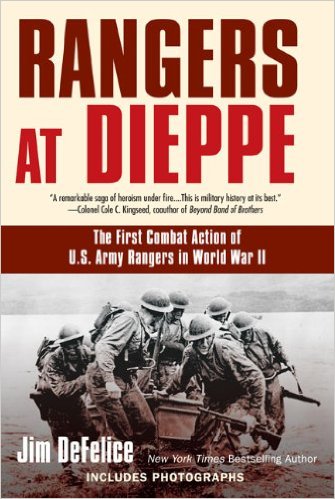DIEPPE The first American ground forces to see action against the Germans, three Rangers of the 1st Ranger Battalion were killed and several captured. Here, drawn from historical records and personal recollections by those who were there, and illustrated with photographs, is the story of the baptism of fire of what would become the U.S. Army Rangers.Corporal Franklin M. Koons (nicknamed ‘Zip’) was the first US soldier to kill a German in World War II during the landings at Dieppe in August 1942.
The origin of the modern US Rangers lay with the Commando forces raised in Britain from 1940. President Roosevelt’s enthusiasm for this type of force was communicated to the Chief of Staff of the US Army, General George Marshall, and he sent Colonel Lucian K. Truscott Jr. to England in early 1942 to evaluate the potential of Britain’s Commando force and investigate the raising of similar US units. Not all the branches of the US armed forces were enthused by the idea. The Navy in general, and the Marine Corps in particular, felt that they had little to learn from the British and argued that they already had the training and capabilities to conduct the types of operation undertaken by the Commandos. This to some extent was true, as the Marine Corps was somewhat reluctantly raising specialist raider-type units to conduct such missions, but these Marine Raider battalions were largely needed in the Pacific, where the Japanese were posing a more immediate and ongoing threat.
Truscott, who was attached to the British Combined Operations staff under Lord Louis Mountbatten while in England, reported back to Marshall in late May and recommended the formation of a US Commando-type unit. The chief of staff concurred and the relevant orders to raise an ‘American Commando’ were issued on June 1. However, the chief of the general staff’s Operations Division, Major General Dwight D. Eisenhower, pointed out that the name Commando was very much associated with the British and requested that a more American name be used for the new unit. Truscott remembered the exploits of Rogers and his men and suggested that Ranger would be a fitting alternative. With a name settled on, it was now necessary to find and train the officers and men for the reborn Rangers. The most immediate and accessible source of recruits were the US forces already stationed in Britain.
The officer designated to found the new Ranger unit was Major William O. Darby, an aide to Major General Russell P. Harte, commander of the US 34th Infantry Division and, from January 27, 1942, the head of the US Army Northern Ireland. Darby, an Arkansas-born West Point graduate whose chosen army career was in the artillery, was stationed at Carrickfergus, some 20 miles (32 km) north of Belfast, but had already requested more active assignments. On June 8 he was ordered to form a Commando-style unit but in the early summer of 1942 the US forces in Britain were small compared to what they would become by 1944. Nevertheless Darby set about raising suitable recruits from what was available locally. These were the two divisions that comprised the US V Corps, the 34th Infantry and 1st Armored, and various support units.
